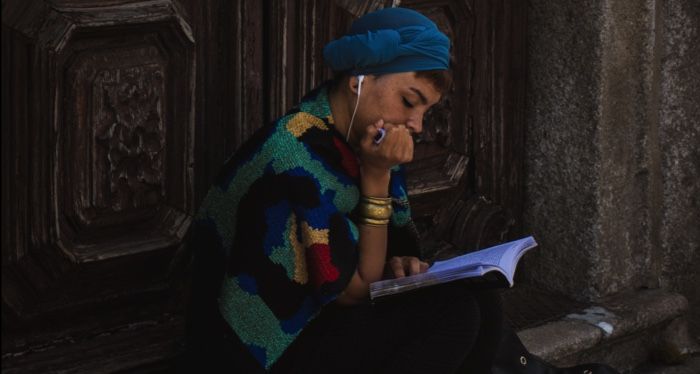
An Ode to Stories That Make Us Happy-Cry
The first thing you should know is that I always manage to choose the worst books to read on airplanes. And by the worst books, I mean fantastic books that will turn me into an awkward blubbering mess that makes the person sitting next to me very concerned. Examples? I’ve managed to finish The Book Thief on a plane twice, read the final chapters of Who Fears Death by Nnedi Okorafor on my way to Buffalo, and finished N.K. Jemisin’s The Stone Sky on a late-night flight to Chicago. I also once chose to watch The Iron Giant while wine drunk on a plane (the flight attendant had to ask if I was okay. It was mortifying).
So why do I do it? Why do I forge forward, isolated on a plane and so completely immersed in the story I’m reading, even when I know the tears are slowly rising?
A good happy-cry is one of the best things that can happen to us. Sometimes when I’m getting into my feelings, I’ll watch a series of Broadway song videos that get me into that mood. “I’m Here” from The Color Purple, for one. And I’ll close it out with “Happier” by Marshmello feat. Bastille, because that music video gets me going every time. So why do I do it? Because nothing is better than the rush of happiness that gets you choked up, that flooding feeling of “there’s a happy ending,” of “we’ve been through hell, we’ve been through a lot, but gosh darn it, we’re still standing.”
I think we could all use a good hopeful cry like that right now especially. We have been through it. We have endured a global pandemic, seen too many people perish, and seen too many people pretend there’s no pandemic at all. The catharsis of a good, hopeful cry — the feeling of relief, of reunion, of omg-she’s-alive, of they-can-finally-be-together, of they-somehow-made-it-out, of they-finally-understand-one-another, of there’s-always-hope-even-when-everything-is-dark — that can’t be understated. It is cleansing. It reminds us that there is a rock-hard core of hope in every story.
The best happy-cry comes when a story has swung us into a too-familiar despair, but then rockets us out of it with a swing of hope or a plot twist that brings us back into joy. So many of us have had a happy-cry when we’re able to finally get that first COVID-19 vaccine, or when a loved one does. It’s relief. It’s hope. It’s a rush of happiness after the hardest darkness.
In January, I read Charlotte McConaghy’s Migrations. It is a climate fiction novel, set in a not-too-distant world where the oceans are almost empty, and animal species are flooding into extinction. The protagonist is determined to follow the arctic terns on their migration, the longest an animal undertakes, and she convinces a reluctant fishing captain to join her. She is self-destructive and cynical, but she is determined to do this. She has to follow the terns. She has to see.
The book felt like a brutal, ragged screech of a love story with our natural world, a nostalgic plea, a love letter to the duality of the ocean, both cold, dangerous, and wonderful, gorgeous. The writing was beautiful, and the story was dark with hard edges. The government stops all commercial boating, and the protagonist and her people aren’t allowed to be out on the water. They aren’t sure if the terns will even be there. If they’ll make it. This was a story about climate change and death after all. I was ready to leave the novel feeling a bit bleak.
But even in the midst of a climate fiction novel around extinction, grief, and loss, McConaghy refuses to give a sorrowful ending. The final swing towards hope left me breathless, and was all the more impactful for its contrast. It fit the story perfectly. That hard core of hope, the images that came with it, left me crying into the pages of the book. I needed that, in January 2020. A cry rooted in relief, in happiness, in there-is-still-hope, in there-will-always-be-hope, in survival, in refusing to fall.
So, here’s a toast to happy tears. To books that make us happy-cry. That give us that sharp relief and quiet catharsis. Here’s a toast to them.











